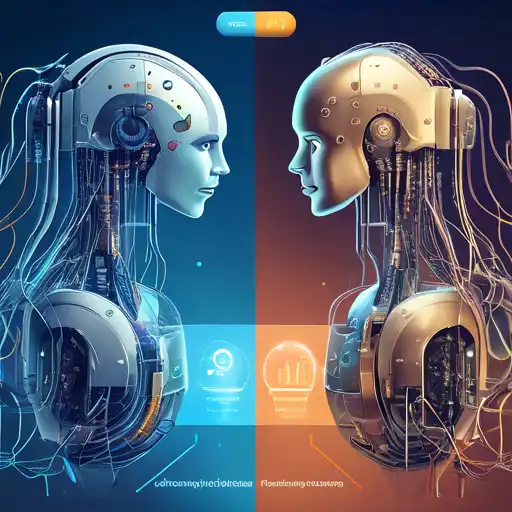Introduction to Machine Learning and Deep Learning
In the realm of artificial intelligence (AI), Machine Learning (ML) and Deep Learning (DL) are two of the most pivotal technologies driving innovation. While they share common foundations, their approaches, applications, and capabilities differ significantly. This article delves into the key differences between ML and DL, providing insights into their unique characteristics and how they're applied in real-world scenarios.
What is Machine Learning?
Machine Learning is a subset of AI that enables systems to learn from data, identify patterns, and make decisions with minimal human intervention. ML algorithms are trained using large sets of data, and they improve their accuracy over time without being explicitly programmed to do so.
Types of Machine Learning
- Supervised Learning: The algorithm learns from labeled data.
- Unsupervised Learning: The algorithm finds hidden patterns or intrinsic structures in input data.
- Reinforcement Learning: The algorithm learns by interacting with an environment to achieve a goal.
What is Deep Learning?
Deep Learning, a subset of ML, mimics the workings of the human brain in processing data for use in detecting objects, recognizing speech, translating languages, and making decisions. DL algorithms use a layered structure of algorithms called neural networks.
Key Features of Deep Learning
- Neural Networks: DL models are built with neural networks that have three or more layers.
- Big Data: DL requires large amounts of data to understand and learn from it effectively.
- Computational Power: Training DL models demands significant computational resources.
Machine Learning vs. Deep Learning: Key Differences
While both ML and DL aim to learn from data, their methodologies and applications differ in several ways:
- Data Dependency: DL requires vast amounts of data to perform well, whereas ML can work with smaller datasets.
- Feature Extraction: In ML, feature extraction is manual and requires domain expertise. DL automates this process, reducing the need for human intervention.
- Computational Resources: DL models are computationally intensive, requiring high-performance GPUs. ML models are less demanding.
- Interpretability: ML models are generally easier to interpret than DL models, which are often considered black boxes.
Choosing Between Machine Learning and Deep Learning
The choice between ML and DL depends on the specific problem, available data, and computational resources. ML is preferable for problems with limited data or when interpretability is crucial. DL excels in handling complex problems like image and speech recognition where large datasets are available.
Conclusion
Understanding the differences between Machine Learning and Deep Learning is essential for leveraging the right technology for your needs. While ML offers simplicity and efficiency for smaller-scale problems, DL provides unparalleled accuracy for complex tasks at the cost of higher data and computational requirements. As AI continues to evolve, the boundaries between ML and DL may blur, but their core differences will remain pivotal in their application.
